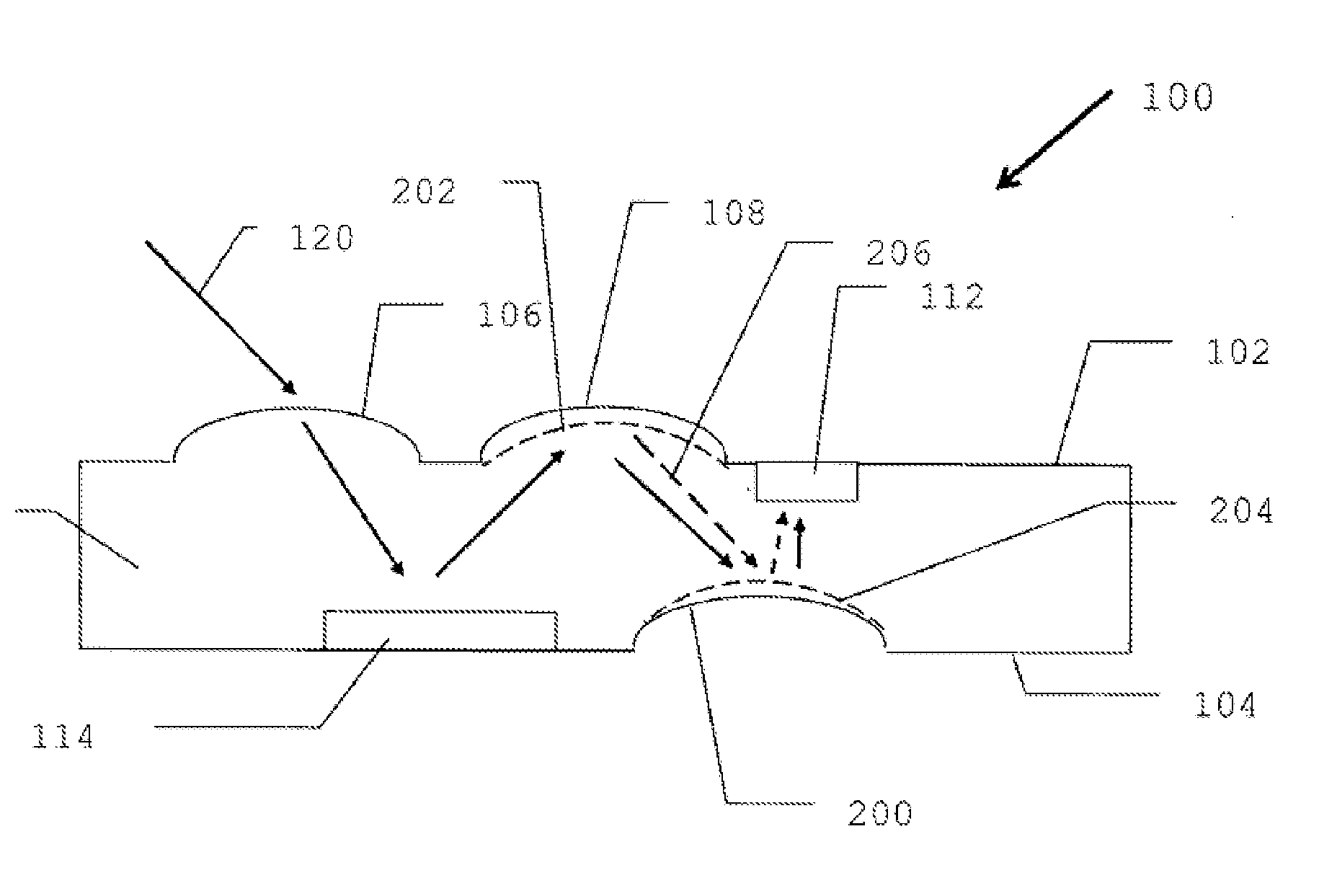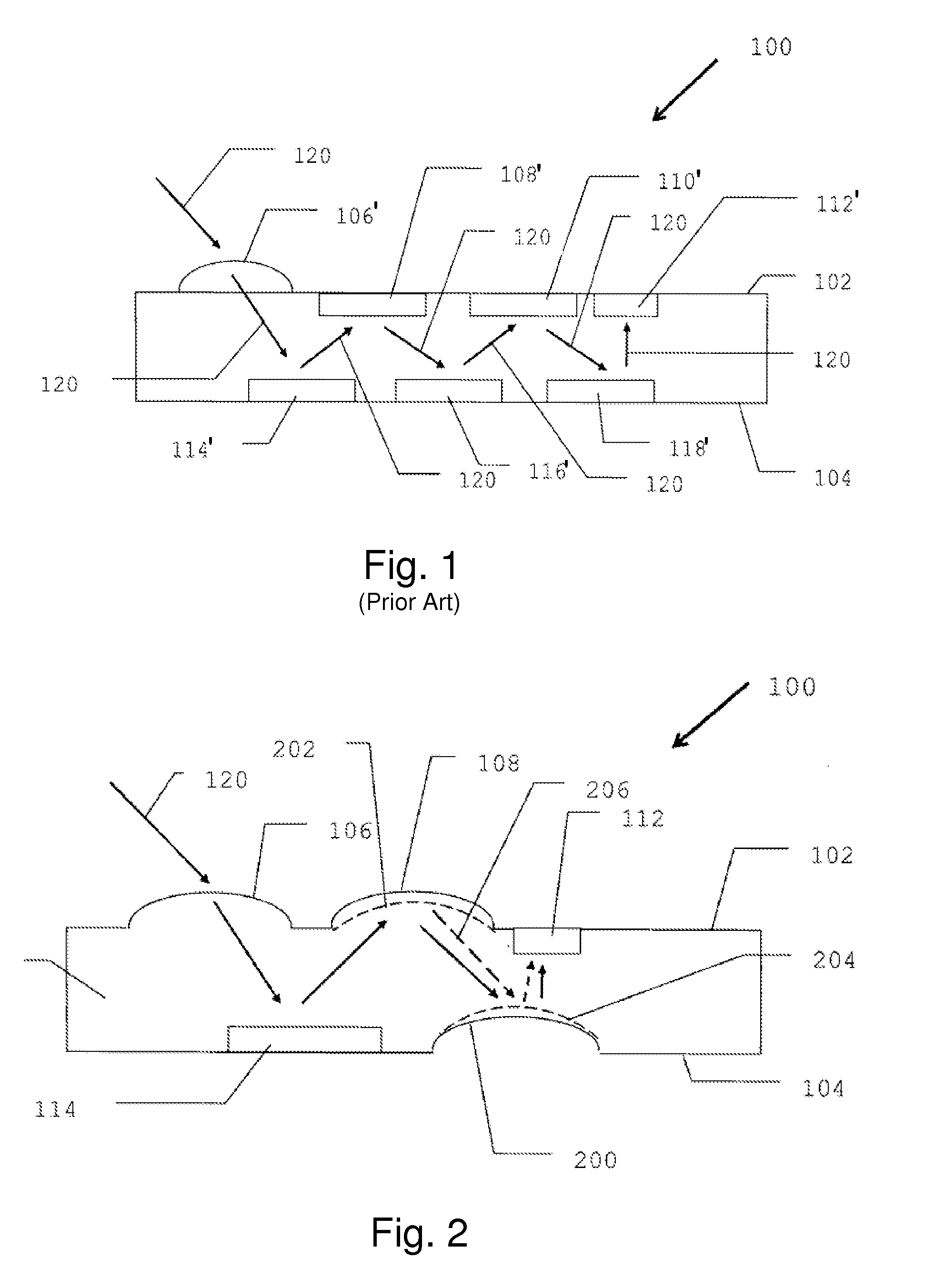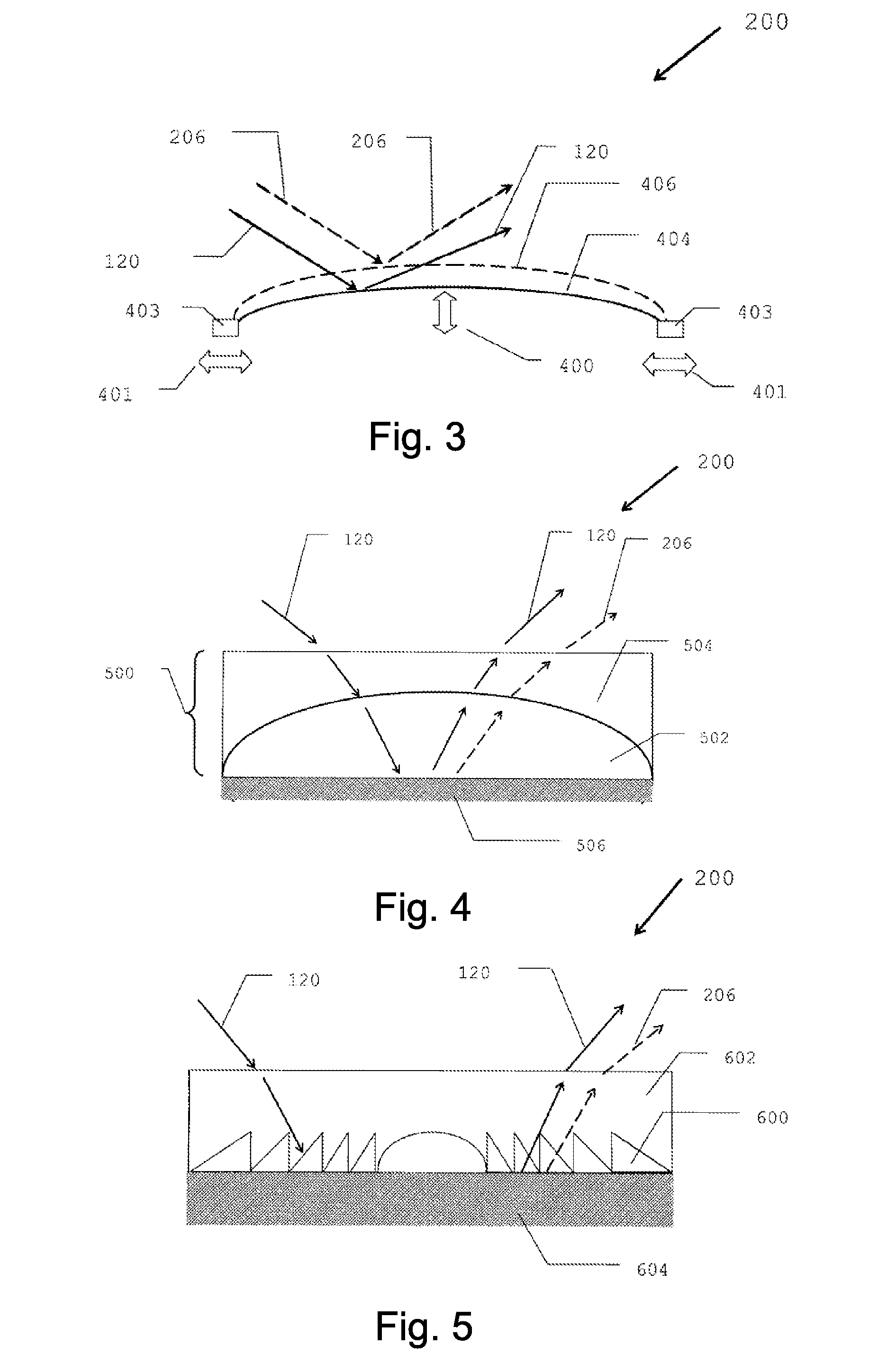[0024]One advantageous embodiment of the proposed solution also makes it possible for the focal length of the imaging system to be continuously adjustable by means of an electrical driving of the at least one optical element.
[0033]The functioning of a piezo-
actuator is based on
piezoelectricity (also called piezoelectric effect).
Piezoelectricity describes the change in electrical polarization and thus the occurrence of an electrical
voltage at certain
solid bodies when they are elastically deformed (direct piezoelectric effect). Conversely, certain materials deform when an electrical
voltage is applied (inverse piezoelectric effect). As a result of the directed deformation of a piezoelectric material, microscopic dipoles form within the elementary cells. Summation by way of the associated
electric field in all of the elementary cells of the
crystal results in a macroscopically measurable electrical
voltage. Conversely, by applying an electrical voltage it is possible to achieve a deformation of a component composed of piezoceramic.
[0035]A
liquid lens generally consists of an
aqueous solution and an oil. The two liquids have different refractive indices and do not mix. A
liquid lens can be constructed, for example, in such a way that the two liquids are situated in a short tubular container, at the ends of which transparent end caps are arranged. One of the end caps and the wall interior surfaces of the tubular container are provided with a water-repellent
coating. This has the effect that the
aqueous solution collects at the non-coated end of the tube and collects there to form a hemispherical
mass. This hemispherical
mass forms a lens-shaped body, which also has the optical properties of a lens, for example of a convex lens.
[0037]Consequently, the lens form can be controlled electrically. The applied
electric field reduces the water-repellant effect of the
coating. As a result, the
aqueous solution wets the sidewalls of the tubular container to a greater extent and the
radius of curvature of the curved surface between the two liquids and the focal length of the lens change when the voltage at the electrodes of the
liquid lens is switched on or off. By means of the change (increase or decrease) it is even possible to obtain an alteration of the lens form from convex to plane or concave.
[0051]A
Fresnel lens or more precisely a Fresnel stepped lens is an optical lens in which weight and volume are reduced by comparison with a customary optical lens with the same
diameter and the same focal length. This has an effect particularly in the case of lenses having a short focal length, which in
a normal form are very thick and heavy. In Fresnel lenses, the volume is reduced by division into ring-shaped regions. The thickness is reduced in each of these regions, such that the lens acquires a series of ring-shaped steps. Since light is refracted only when passing through the lens surfaces, the angle of
refraction is not dependent on the thickness, but rather only on the angle between the two surfaces. The lens maintains its focal length, but the
imaging quality is impaired by the stepped structure. Fresnel lenses are generally used where the weight of the lenses is crucial and the
imaging quality is of secondary importance.
[0052]If a
Fresnel lens is covered with a
liquid crystal, then the
refractive index of the
liquid crystal can be electrically switched. It can be switched e.g., such that, in one switching state, there is a jump in
refractive index between the material of the
Fresnel lens and the liquid
crystal, as a result of which the Fresnel lens has an effect. In the other switching state, the
refractive index difference can disappear, such that the Fresnel lens does not have an effect. In this way, the effect of the Fresnel lens can be switched on and off.
 Login to View More
Login to View More  Login to View More
Login to View More 


